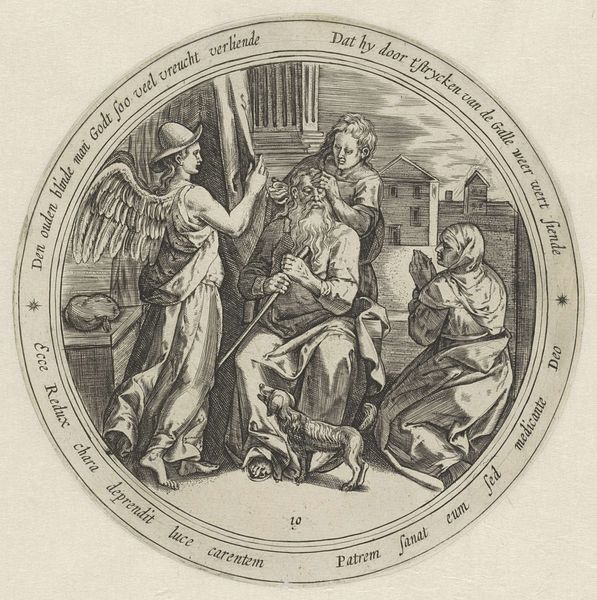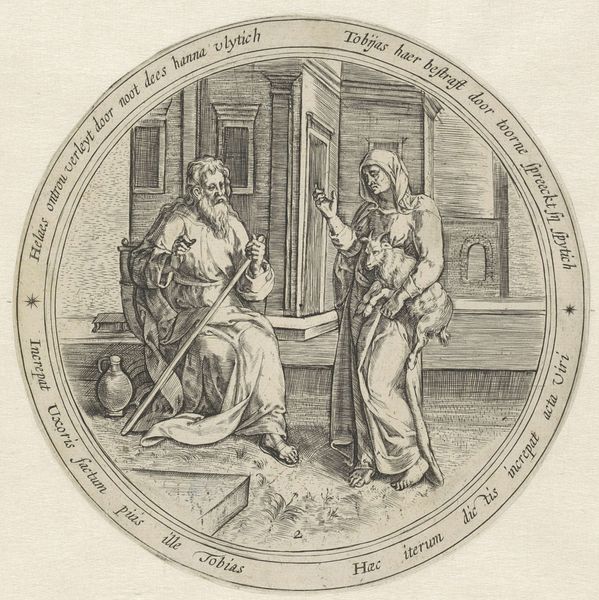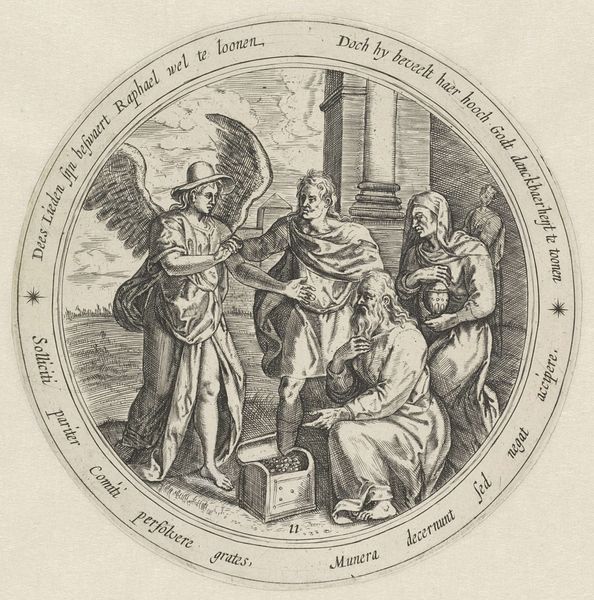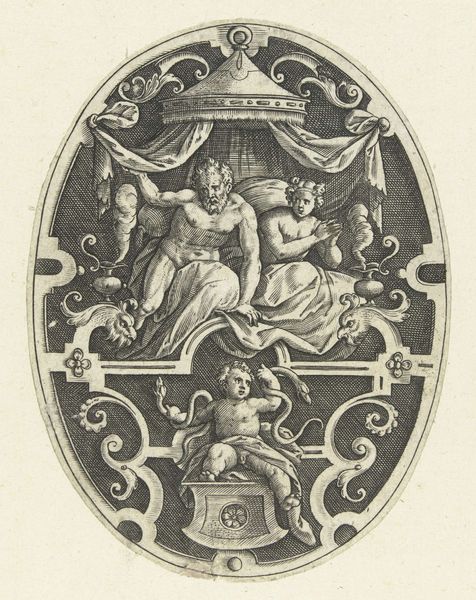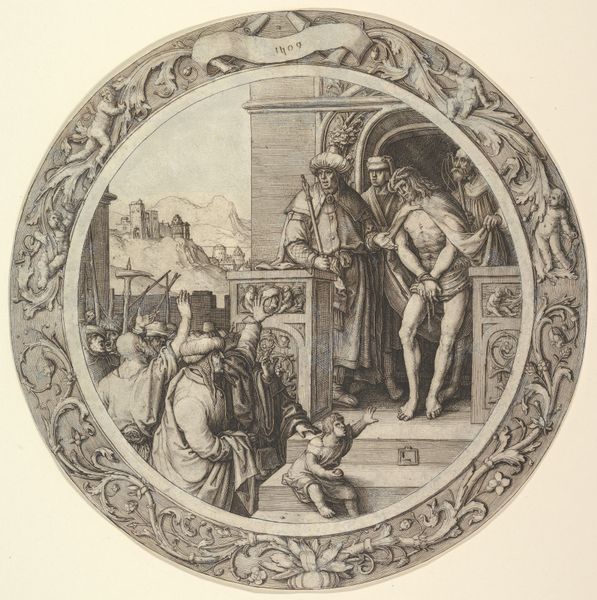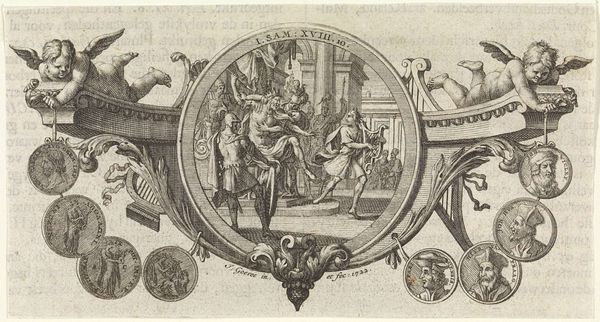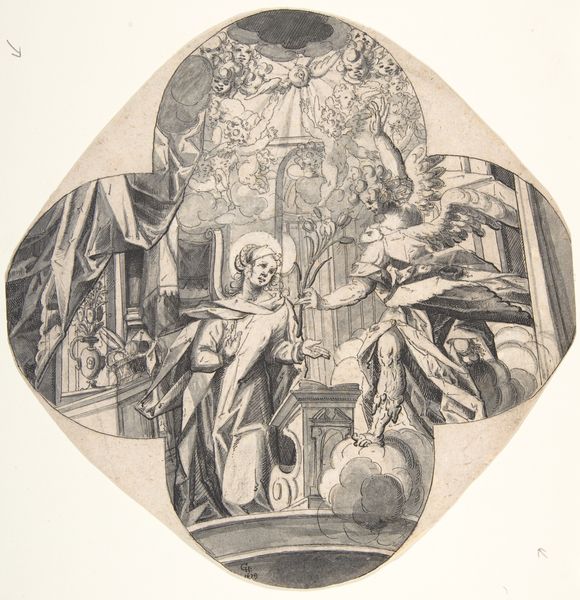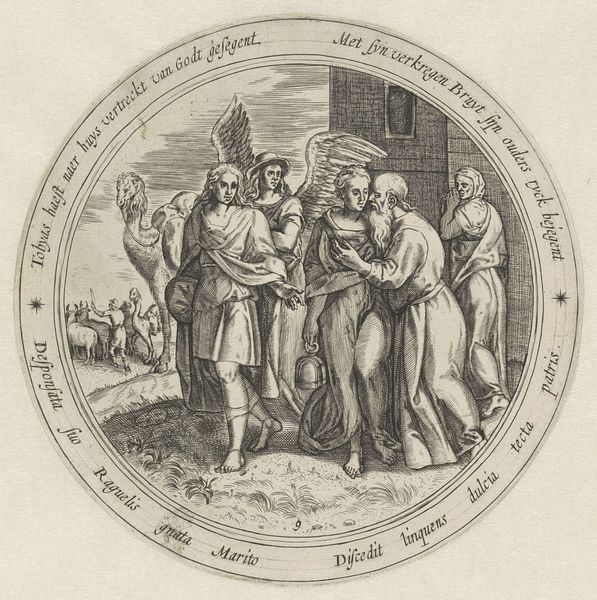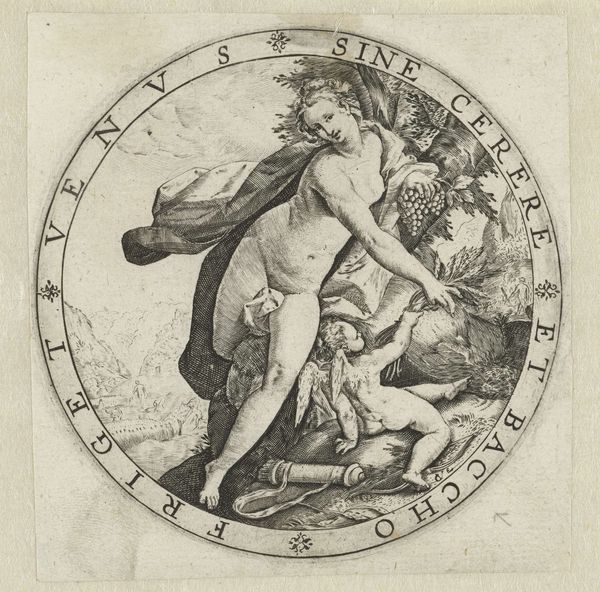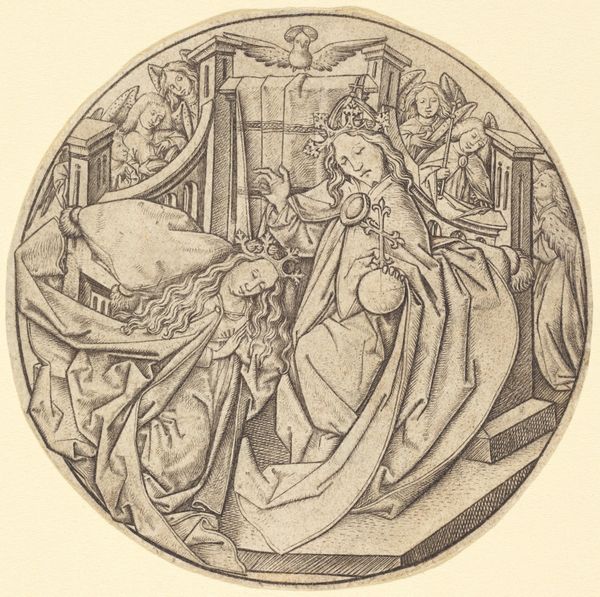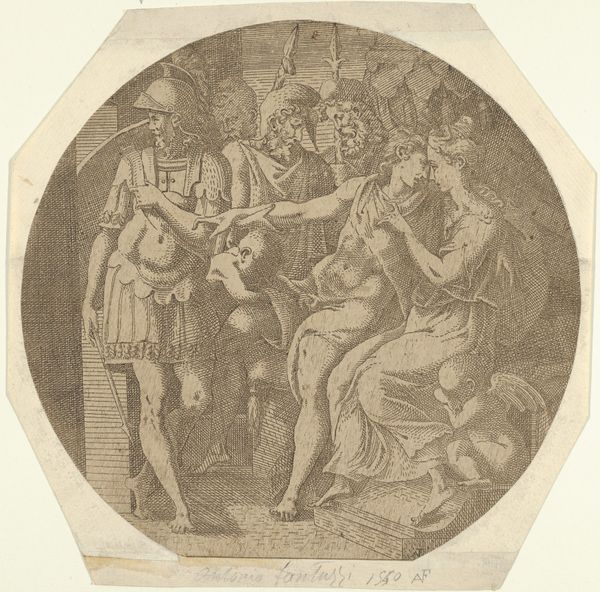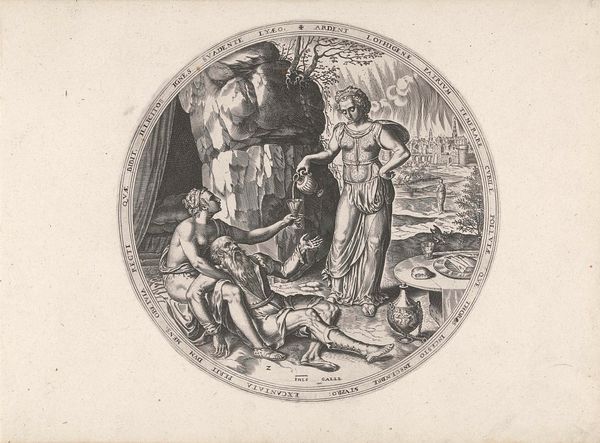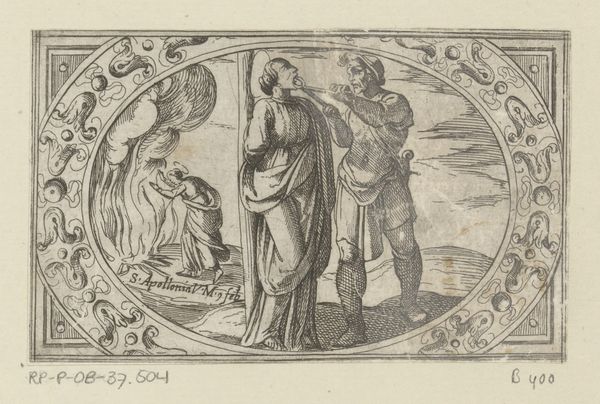
print, engraving
#
allegory
#
narrative-art
#
baroque
# print
#
old engraving style
#
figuration
#
line
#
history-painting
#
engraving
Copyright: Rijks Museum: Open Domain
Curator: This is "Huwelijksnacht van Tobias en Sara," or "The Wedding Night of Tobias and Sarah." Created between 1601 and 1652, this engraving resides here at the Rijksmuseum. Editor: My first impression is a sense of tightly controlled drama. Everything, from the figures to the text, is contained within this circular format, creating a focused, almost claustrophobic atmosphere. Curator: Absolutely. Consider how the image engages with the apocryphal Book of Tobit. Sarah’s previous seven marriages were each thwarted by a demon named Asmodeus, who killed the bridegrooms on their wedding nights. Editor: I notice that this image captures the precise moment of deliverance, thanks to Tobias’s piety and the archangel Raphael. We see Sarah kneeling in prayer, bathed in light, while in the other half Raphael battles a rather hapless-looking devil near a hearth. Curator: The symbolism is key here. The burning liver represents a potent purification ritual that was often thought of in relationship with early Jewish mysticism. But it also signals anxieties about marriage, particularly the perceived vulnerability of women. It reveals power dynamics within the domestic sphere, showcasing the intervention needed to secure female safety and conjugal happiness. Editor: It’s interesting how the artist employs text to frame the image, creating layers of meaning. The inscriptions almost act as talismans, designed to ward off evil influences and protect the marriage bed. And notice the stars, those delicate details of celestial magic sprinkled within that ring. Curator: This piece certainly reflects the era's fascination with allegory. The battle between good and evil extends beyond a literal interpretation to embody deeper cultural anxieties about morality, sin, and the power of faith within marital institutions. I am struck by how, for the artist, the narrative highlights power structures embedded in these personal choices and beliefs. Editor: Seeing the composition and iconography makes me contemplate how visual symbols functioned as agents of both fear and hope in this period. The devil's demise signifies triumph over forces seen as capable of destroying domestic order, all in stark black and white. The weight is remarkable. Curator: This journey through "Huwelijksnacht van Tobias en Sara" sheds light on how deeply cultural anxieties, spiritual beliefs, and gendered power dynamics intertwined during the early modern era. Editor: Indeed, I now read the imagery more deeply, recognizing not just a biblical scene but the tangible hopes and fears concerning the domestic foundations of the era.
Comments
No comments
Be the first to comment and join the conversation on the ultimate creative platform.
